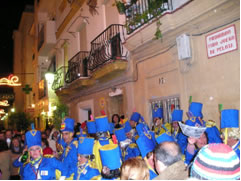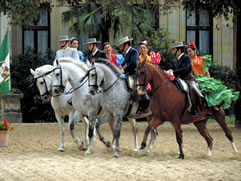![]() CARNAVAL
CARNAVAL
Each February, Cadiz holds its exuberant Carnaval in the period around Shrove Tuesday, the run up to Lent. In fact the name Carnaval derives from carne (meat) as traditionally the eating of meat was forbidden during the 40 days of Lent. Nowadays Carnaval means normal behaviour is put on hold, with seemingly everyone in fancy dress costume enjoying the atmosphere and the local wines. Cadiz carnival is seen as one of the most colourful in Spain, with decorated floats and various groups touring the streets and bars, singing and acting out sketches based on events and people in the public eye. The streets of La Vina in the old town are a good place to experience the atmosphere, although most of the towns in the Cadiz bay area join in the celebrations.



